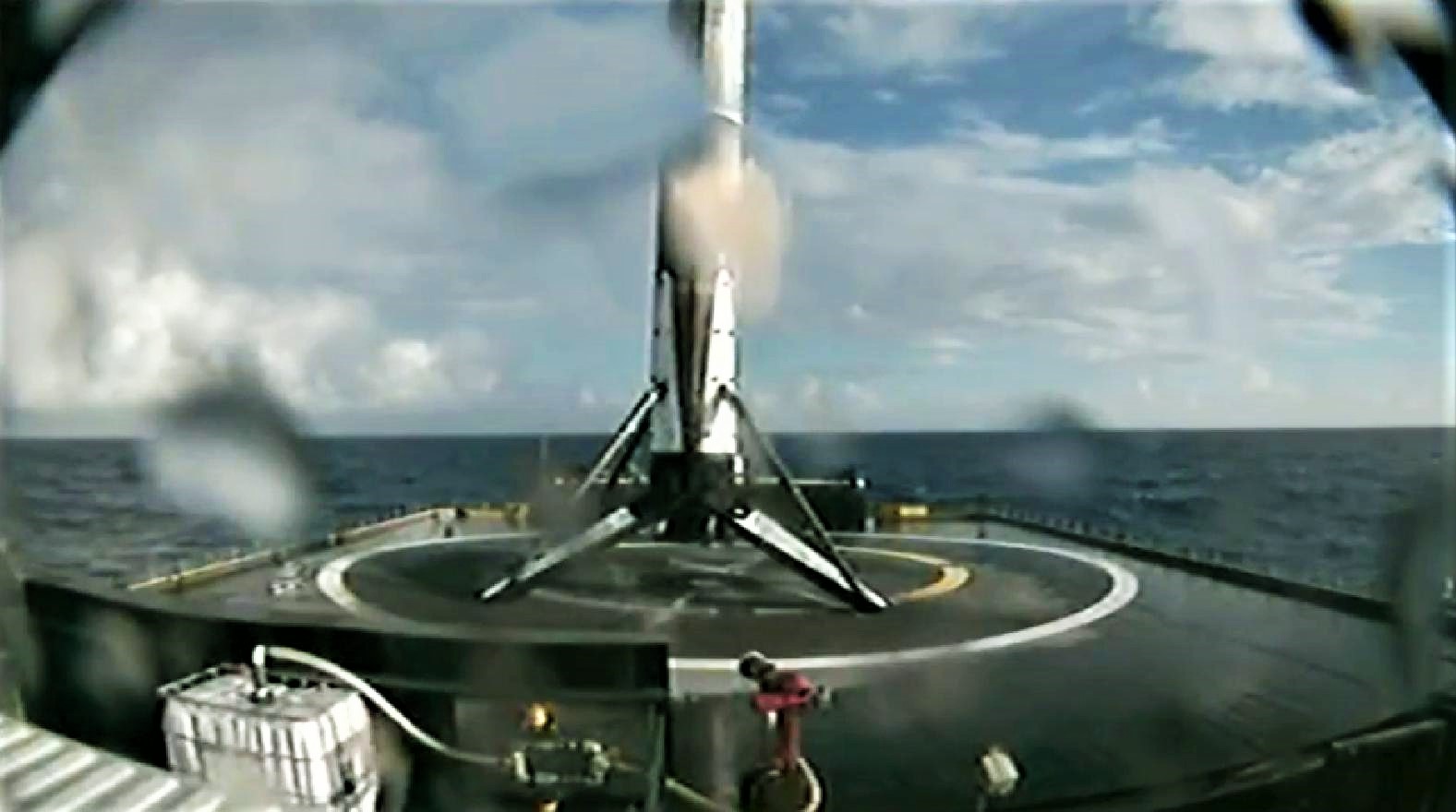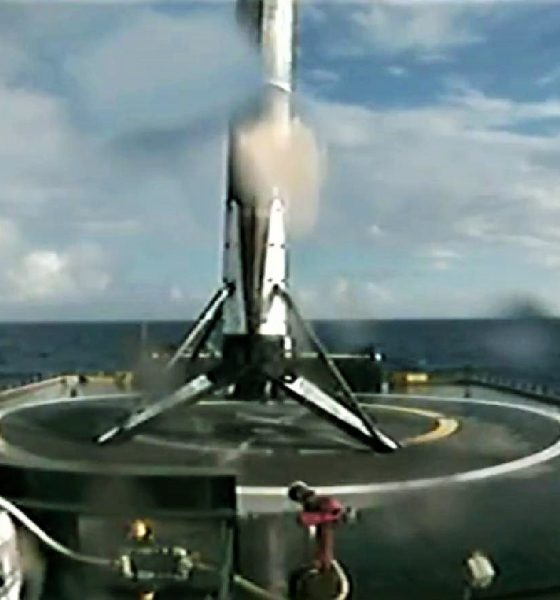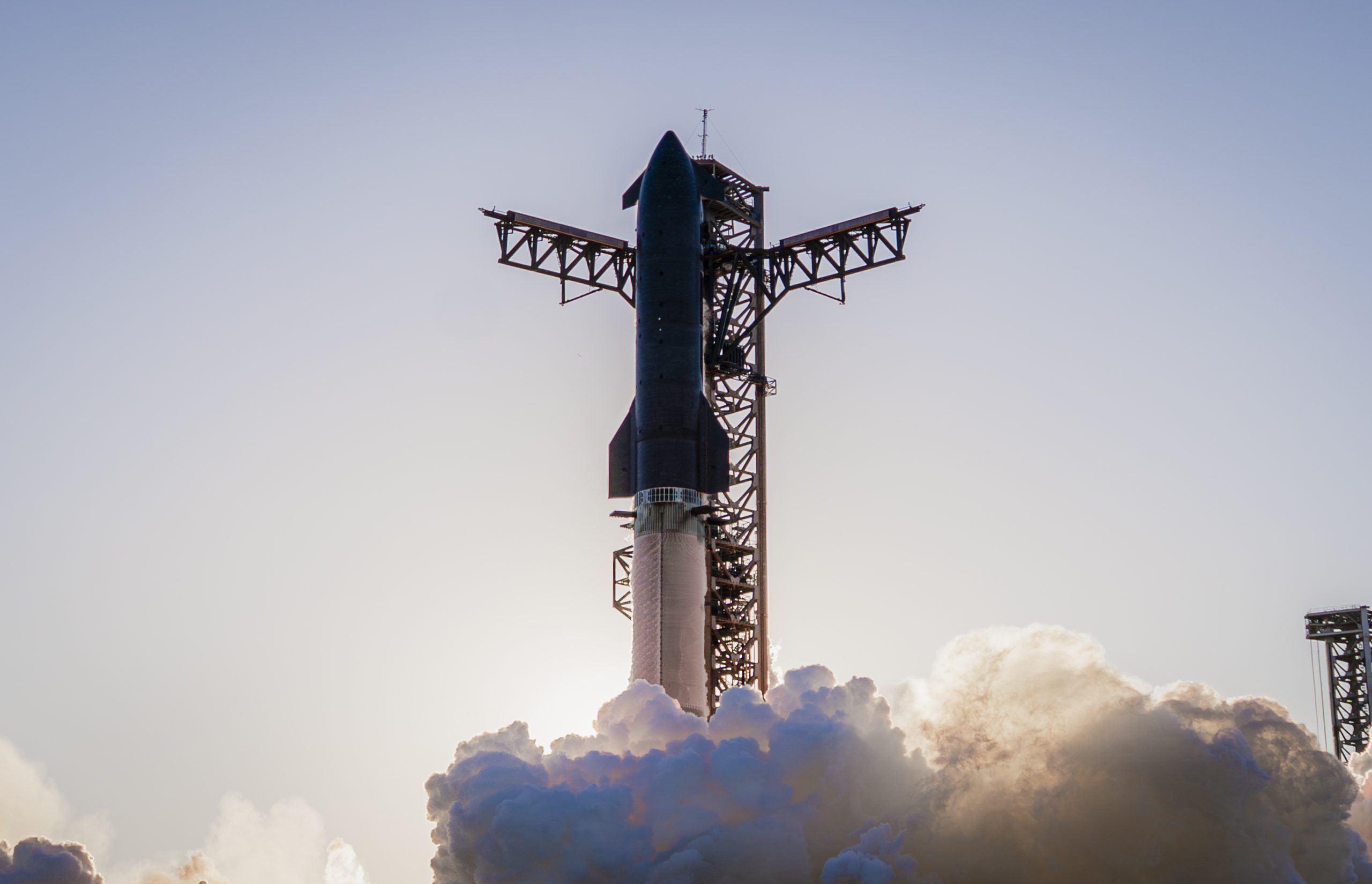

SpaceX
SpaceX’s twice-flown Falcon 9 fleet grows by one with flawless launch, landing
SpaceX has completed its 18th successful launch of 2018 while also expanding its fleet of twice-flown Falcon 9 Block 5 boosters from two to three rockets, foreshadowing a near future where most of the company’s rockets have long and storied flight histories, much like today’s airliners.
Up next for SpaceX is a mission directly related to that goal: the launch of SSO-A from Vandenberg Air Force Base is expected to make use of a twice-flown Falcon 9 booster, to become the first time the company has commercially launched the same rocket three times. The ultimate goal of Falcon 9 Block 5 is to enable at least 10 reflights with minimal refurbishment, and the 3rd reflight is the next major step in that direction.
https://twitter.com/_TomCross_/status/1063177544973869058
While we still do not have an official idea of the payload’s weight, Falcon 9 placed the roughly 3000-kg communications satellite into a geostationary transfer orbit (GTO), where Es’hail-2 will gradually climb Earth’s gravity well to a circular orbit under the power of its own small propulsion system. Once complete, it will serve the Middle East a variety of satellite communications services, including both enterprise, consumer, and government customers.
Prior to launching Es’hail-2, Falcon 9 booster B1047 placed the massive (7000+ kg) Telstar 19V commsat into a low but serviceable GTO before landing aboard drone ship Of Course I Still Love You (OCISLY). The rocket then returned to Port Canaveral and was transported to one of SpaceX’s nearby facilities for repair, refurbishment, and inspection around the end of July. According to President and COO Gwynne Shotwell, Block 5 rockets – as of September 2018 – require just four weeks or refurbishment on average. Although July-November is not exactly four weeks, it’s possible that the process was completed months ago and the rocket has simply been waiting in the wings for the availability of its next payload.
Shotwell: Falcon 9 first stages come back in much better shape than anticipated. Have refurbishment time down to four weeks; goal is still a one-day turnaround next year. #WSBW
— Jeff Foust (@jeff_foust) September 11, 2018
As it turns out, SpaceX decided to conduct the rocket’s second launch from a different launch pad, known as Pad 39A. 39A is in the process of being modified to support Crew Dragon launches, including a variety of changes to its ground support equipment, the transporter/erector (T/E), and the Fixed Service Structure (FSS), most notably signified by the installation of gleaming black and white crew access arm (CAA). While the reasoning behind the move from LC-40 to LC-39A is opaque, the likeliest explanation is that SpaceX wanted an opportunity to shake down a majority of those modifications to reduce schedule uncertainty and risk for Crew Dragon’s uncrewed launch debut, NET early January 2019.
Ultimately, as stated by a SpaceX announcer during the webcast, B1047’s successful second launch and landing aboard OCISLY paves the way for a potential third launch and landing for the rocket, perhaps just a few months away. The first triple-launch of a single Falcon 9 booster is currently penciled in for November 19th from VAFB, pending a static fire attempt either today or tomorrow.
Looking back at the sun from upper stage & Falcon 9 🚀 landed on drone ship Of Course I Still Love You pic.twitter.com/sg3FXIDQJL
— Elon Musk (@elonmusk) November 15, 2018

Elon Musk
SpaceX maintains unbelievable Starship target despite Booster 18 incident
It appears that it will take more than an anomaly to stop SpaceX’s march towards Starship V3’s refinement.

SpaceX recently shared an incredibly ambitious and bold update about Starship V3’s 12th test flight.
Despite the anomaly that damaged Booster 18, SpaceX maintained that it was still following its plans for the upgraded spacecraft and booster for the coming months. Needless to say, it appears that it will take more than an anomaly to stop SpaceX’s march towards Starship V3’s refinement.
Starship V3 is still on a rapid development path
SpaceX’s update was posted through the private space company’s official account on social media platform X. As per the company, “the Starbase team plans to have the next Super Heavy booster stacked in December, which puts it on pace with the test schedule planned for the first Starship V3 vehicle and associated ground systems.”
SpaceX then announced that Starship V3’s maiden flight is still expected to happen early next year. “Starship’s twelfth flight test remains targeted for the first quarter of 2026,” the company wrote in its post on X.
Elon Musk mentioned a similar timeline on X earlier this year. In the lead up to Starshp Flight 11, which proved flawless, Musk stated that “Starship V3 is a massive upgrade from the current V2 and should be through production and testing by end of year, with heavy flight activity next year.” Musk has also mentioned that Starship V3 should be good enough to use for initial Mars missions.
Booster 18 failure not slowing Starship V3’s schedule
SpaceX’s bold update came after Booster 18 experienced a major anomaly during gas system pressure testing at SpaceX’s Massey facility in Starbase, Texas. SpaceX confirmed in a post on X that no propellant was loaded, no engines were installed, and personnel were positioned at a safe distance when the booster’s lower section crumpled, resulting in no injuries.
Still, livestream footage showed significant damage around the liquid oxygen tank area of Booster 18, leading observers to speculate that the booster was a total loss. Booster 18 was among the earliest vehicles in the Starship V3 series, making the failure notable. Despite the setback, Starship V3’s development plans appear unchanged, with SpaceX pushing ahead of its Q1 2026 test flight target.
Elon Musk
SpaceX issues statement on Starship V3 Booster 18 anomaly
The incident unfolded during gas-system pressure testing at the company’s Massey facility in Starbase, Texas.

SpaceX has issued an initial statement about Starship Booster 18’s anomaly early Friday. The incident unfolded during gas-system pressure testing at the company’s Massey facility in Starbase, Texas.
SpaceX’s initial comment
As per SpaceX in a post on its official account on social media platform X, Booster 18 was undergoing gas system pressure tests when the anomaly happened. Despite the nature of the incident, the company emphasized that no propellant was loaded, no engines were installed, and personnel were kept at a safe distance from the booster, resulting in zero injuries.
“Booster 18 suffered an anomaly during gas system pressure testing that we were conducting in advance of structural proof testing. No propellant was on the vehicle, and engines were not yet installed. The teams need time to investigate before we are confident of the cause. No one was injured as we maintain a safe distance for personnel during this type of testing. The site remains clear and we are working plans to safely reenter the site,” SpaceX wrote in its post on X.
Incident and aftermath
Livestream footage from LabPadre showed Booster 18’s lower half crumpling around the liquid oxygen tank area at approximately 4:04 a.m. CT. Subsequent images posted by on-site observers revealed extensive deformation across the booster’s lower structure. Needless to say, spaceflight observers have noted that Booster 18 would likely be a complete loss due to its anomaly.
Booster 18 had rolled out only a day earlier and was one of the first vehicles in the Starship V3 program. The V3 series incorporates structural reinforcements and reliability upgrades intended to prepare Starship for rapid-reuse testing and eventual tower-catch operations. Elon Musk has been optimistic about Starship V3, previously noting on X that the spacecraft might be able to complete initial missions to Mars.
Elon Musk
SpaceX Starship Version 3 booster crumples in early testing
Photos of the incident’s aftermath suggest that Booster 18 will likely be retired.

SpaceX’s new Starship first-stage booster, Booster 18, suffered major damage early Friday during its first round of testing in Starbase, Texas, just one day after rolling out of the factory.
Based on videos of the incident, the lower section of the rocket booster appeared to crumple during a pressurization test. Photos of the incident’s aftermath suggest that Booster 18 will likely be retired.
Booster test failure
SpaceX began structural and propellant-system verification tests on Booster 18 Thursday night at the Massey’s Test Site, only a few miles from Starbase’s production facilities, as noted in an Ars Technica report. At 4:04 a.m. CT on Friday, a livestream from LabPadre Space captured the booster’s lower half experiencing a sudden destructive event around its liquid oxygen tank section. Post-incident images, shared on X by @StarshipGazer, showed notable deformation in the booster’s lower structure.
Neither SpaceX nor Elon Musk had commented as of Friday morning, but the vehicle’s condition suggests it is likely a complete loss. This is quite unfortunate, as Booster 18 is already part of the Starship V3 program, which includes design fixes and upgrades intended to improve reliability. While SpaceX maintains a rather rapid Starship production line in Starbase, Booster 18 was generally expected to validate the improvements implemented in the V3 program.
Tight deadlines
SpaceX needs Starship boosters and upper stages to begin demonstrating rapid reuse, tower catches, and early operational Starlink missions over the next two years. More critically, NASA’s Artemis program depends on an on-orbit refueling test in the second half of 2026, a requirement for the vehicle’s expected crewed lunar landing around 2028.
While SpaceX is known for diagnosing failures quickly and returning to testing at unmatched speed, losing the newest-generation booster at the very start of its campaign highlights the immense challenge involved in scaling Starship into a reliable, high-cadence launch system. SpaceX, however, is known for getting things done quickly, so it would not be a surprise if the company manages to figure out what happened to Booster 18 in the near future.









